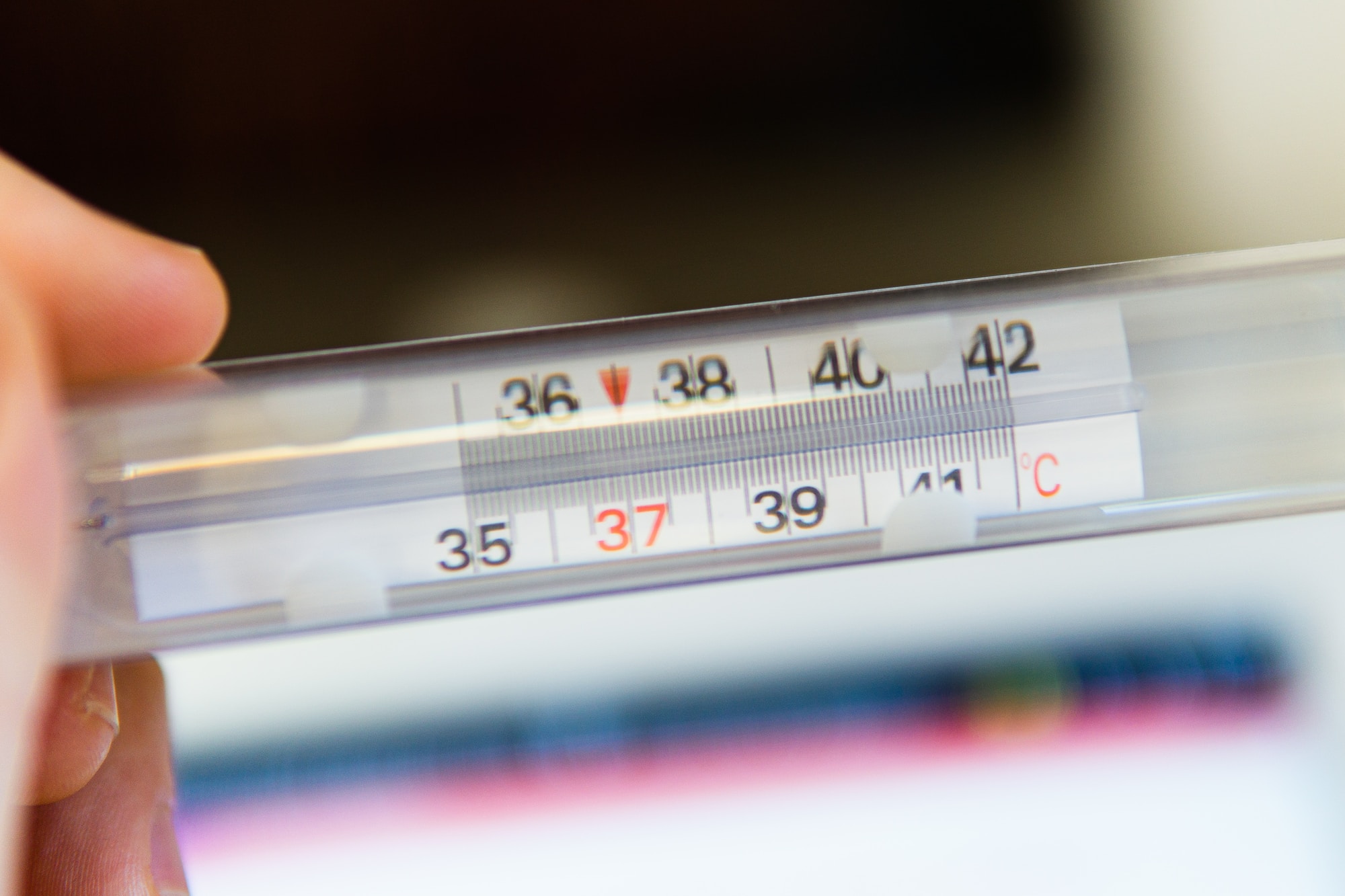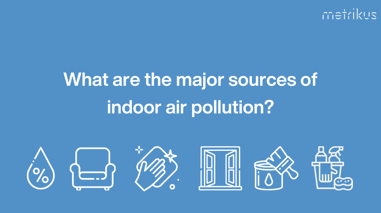What affects indoor air quality and how can you improve it?
We often hear about different indoor air quality parameters that can have an adverse affect on our health. However, with lots of abbreviations and scientific terms being used, it can be difficult to understand exactly what the key air quality parameters are and how they might be impacting us.
To help you out, we’ve provided a breakdown of these factors and explained why they are so important.
How can the temperature of a room affect you?
Whether you're working at home or in the office, your indoor temperature could be having an impact on your productivity. Research indicates that performance of office work is maximised between 21°C and 22°C, and for every degree above 25°C productivity is seen to decline by 2%. Poor thermal comfort can also contribute to Sick Building Syndrome (SBS) symptoms including headaches, itchy skin, dry or sore eyes, blocked or runny noses and rashes.

Photographer: Matteo Fusco | Source: Unsplash
How does humidity affect you and indoor air quality?
Relative humidity is the concentration of water vapour present in the air, expressed as a percentage. Humidity directly affects your health and comfort and the presence of biological pollutants such as mould spores. Like temperature, it has an important impact on the survival rate of viruses.
Humidity lower than 30% causes eyes and skin to become dry and irritated and can aggravate conditions like asthma. It also causes mucous membranes to dry out, which compromises our body’s natural defence to viruses. High humidity, greater than 60%, can impact feelings of lethargy and exacerbate allergies and respiratory diseases. Increased levels can also affect the concentration of volatile organic compounds (VOCs).
To ensure your humidity levels don’t become too high, make sure you use exhaust fans in your kitchen and bathroom. If your house is particularly humid, it could be a good idea to invest in a dehumidifier. If you want to increase your humidity levels, you can simply boil water on your stove or use a humidifier.

How does carbon dioxide affect you and indoor air quality?
Carbon dioxide is a naturally occurring, colourless, odourless gas that makes up 0.04% (400ppm) of air. Occupied indoor concentrations of CO2 tend to be significantly higher than outdoor concentrations, and levels in your home may become particularly high at the moment if you have multiple people staying inside all day.
CO2 is not harmful to health unless levels reach >4.0% of air composition (40,000ppm). However, there is a clear association between elevated indoor CO2 levels and increases in Sick Building Syndrome (SBS) symptoms.
What does carbon dioxide do to the body?
Elevated levels of CO2 can cause up to 11% reduction in productivity, 23% impairment in decision making and 299% reduction in information usage. And even though it’s naturally part of the air we breathe, even very slightly elevated levels of CO2 have been shown to cause adverse health effects, such as aggravating respiratory problems and causing dizziness and fatigue.

Photographer: Caroline Attwood | Source: Unsplash
How can carbon monoxide affect you?
Carbon monoxide is a colourless, odourless, tasteless gas produced by burning gasoline, wood, propane, charcoal or other fuel. Improperly ventilated appliances and engines, particularly in a tightly sealed or enclosed space, can allow carbon monoxide to reach dangerous levels.
Carbon monoxide poisoning is extremely dangerous and potentially fatal. The most common symptoms are headache, dizziness, weakness, upset stomach, vomiting, chest pain, and confusion.
All homes that have a fuel burning appliance, such as gas powered boilers, heaters, ovens, stoves and open fire places, should have at least one carbon monoxide alarm. You should double check that you have an alarm and that it’s working properly.

What are the impacts of nitrogen dioxide?
Nitrogen dioxide (NO2), primarily gets into the air from the burning of fuel. It can form from emissions from cars, trucks and buses, power plants, and off-road equipment.
Breathing air with a high concentration of NO2 can irritate airways in the human respiratory system. Short periods of exposure can aggravate respiratory diseases, particularly asthma, leading to respiratory symptoms such as coughing, wheezing or difficulty breathing. Longer exposures to elevated concentrations of NO2 may contribute to the development of asthma and potentially increase susceptibility to respiratory infections.
While you are at home, there are some key rules to follow to ensure your NO2 levels don’t become too high. These include keeping gas appliances properly adjusted, using the correct fuel in kerosene space heaters, and opening flues when fireplaces are in use. You should also never keep your car running inside a garage. These tips are also useful to reduce exposure to carbon monoxide.

Photographer: Alexander Popov | Source: Unsplash
How do Total Volatile Organic Compounds affect the body?
Total Volatile Organic Compounds (TVOCs) is a collective term used to define a group of common VOCs. VOCs comprise a wide range of chemicals, which may be emitted over a period of weeks or years. Their main source is construction and furnishing products such as sealants, paints, wall and floor coverings.
Short-term exposure to elevated levels of VOCs causes adverse effects like eye and respiratory tract irritation, headaches, dizziness, visual disorders and memory impairment. There has also been an association between higher concentrations of VOCs in indoor air with allergies, asthma, and other respiratory health symptoms. Long-term health effects include prolonged eye, nose and throat irritation as well as liver, kidney and central nervous system damage and even cancer.
It’s important to ensure your house is adequately ventilated, especially when you’re using things like cleaning products or air fresheners.

What are the dangers of PM2.5?
PM2.5 is defined as fine particulate matter with a diameter less than 2.5 µm. Particles like these are harmful as they can penetrate into the lungs and bloodstream. Short term exposure can cause irritation of the airways, coughing and cardiovascular problems. Long term exposure can cause premature death from heart disease and lung disease including cancer.
There’s no safe level of PM2.5, but the guideline set by the World Health Organisation (WHO) is 10ug/m3. For every 10ug/m3 increase in levels of PM2.5 above this guideline, life expectancy is seen to be lowered by one year. An easy way to prevent high levels of PM2.5 is to avoid using wood-burning stoves, or to ensure adequate ventilation when they are in use.

How to improve indoor air quality
The best way to improve your indoor air quality is to install sensors to monitor temperature, humidity, CO2, CO, NO2, TVOCs and PM2.5, all in real-time. Smart alerts can be used to notify you when these parameters deviate from their optimal zone, ensuring your indoor environment is as healthy as possible.
Ready to improve your indoor air quality? Find out more about Metrikus’ smart solution.




